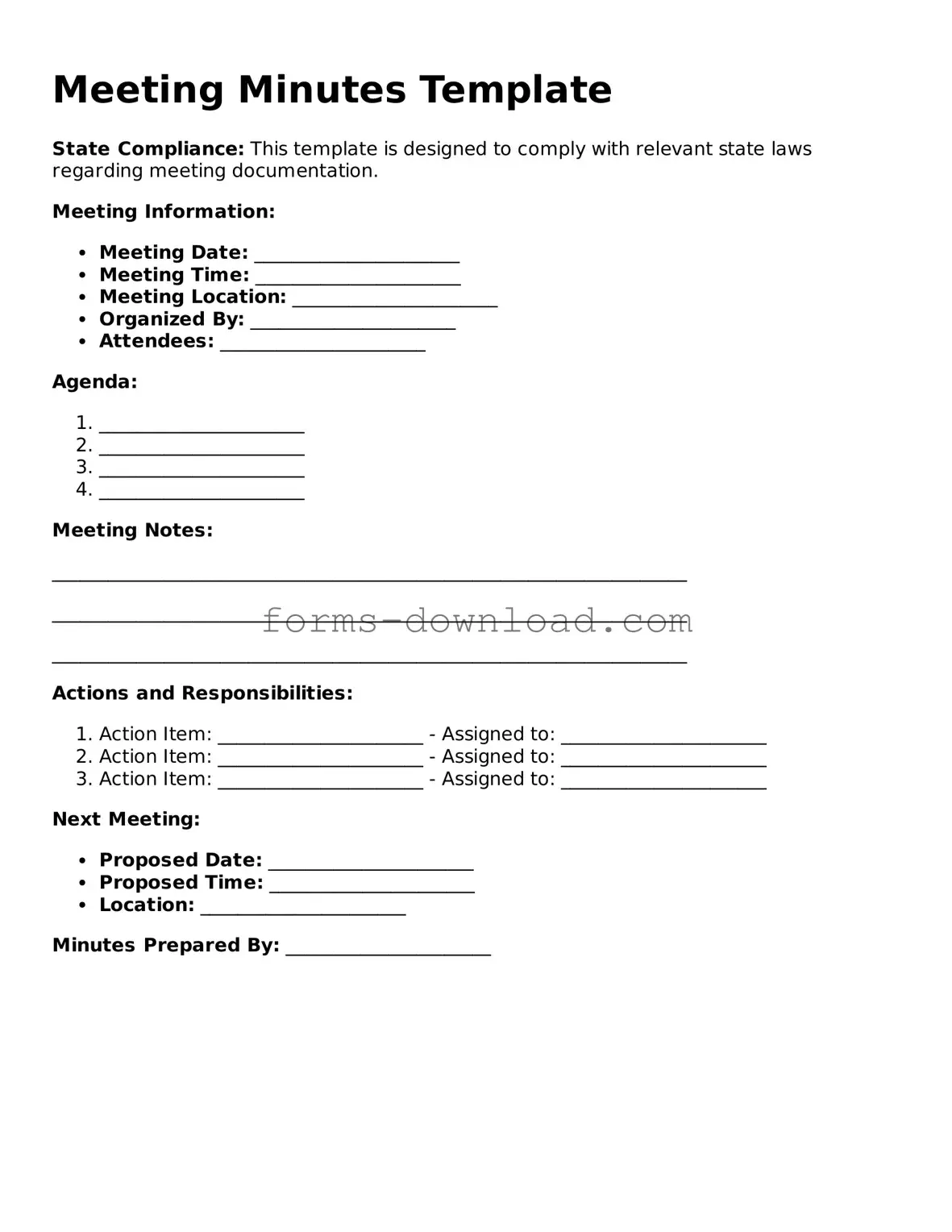Meeting minutes play a crucial role in documenting the discussions, decisions, and action items from any gathering, ensuring that all participants are on the same page. This form serves as a structured template to capture key details such as the date, time, and location of the meeting, along with the names of attendees and absentees. It highlights the agenda items discussed, providing a clear record of what was covered. Additionally, the minutes include action items assigned to specific individuals, along with deadlines for completion. By maintaining this level of detail, the Meeting Minutes form not only aids in accountability but also serves as a valuable reference for future meetings. Clarity and organization are essential in this document, as they facilitate effective communication and follow-up among team members. Whether for a formal board meeting or an informal team huddle, using a standardized form can enhance productivity and ensure that nothing important slips through the cracks.
